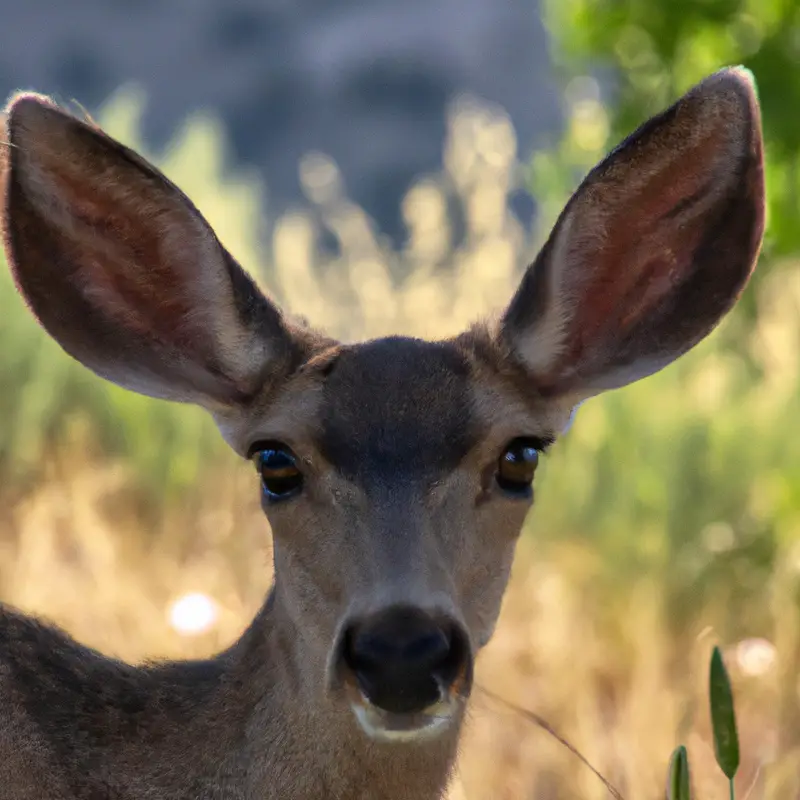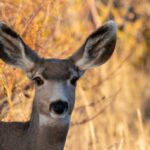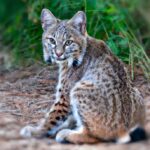Key Takeaways:
- 1) Mule deer hunting in California requires proper licenses and tags.
- 2) Hunting mule deer in California requires knowledge of the hunting seasons and regulations.
- 3) The success of mule deer hunting in California depends on factors like habitat and weather.
- 4) Hunting mule deer in California requires ethical and responsible hunting practices.
Are you ready to embark on an unforgettable hunting adventure in the beautiful state of California?
Well, look no further, because in this blog article, I’m going to walk you through everything you need to know about hunting Mule deer in the Golden State.
As an avid hunter with years of experience chasing these majestic creatures, I’ll share my expertise on the best hunting zones, understanding Mule deer behavior, essential gear, and safety tips.
Whether you’re a seasoned hunter or a beginner, this guide will equip you with the knowledge and techniques to make your Mule deer hunt in California a resounding success.
So grab your gear, and let’s dive into the wild world of Mule deer hunting in California!
Topic | Hunting Mule deer in California |
Location | California |
Season | Varies (see California Department of Fish and Wildlife for specific dates) |
License | Required (General hunting license and deer tag) |
Weapon | Rifle, shotgun, or bow and arrow |
Method | Spot and stalk, still hunting, or stand hunting |
Bag Limit | Varies (see California Department of Fish and Wildlife for specific regulations) |
Restrictions | Check California Department of Fish and Wildlife for specific regulations, including hunting zones, hunting hours, and any special permits required |
Pros | – Abundance of Mule deer population in certain areas – Opportunity to hunt in beautiful and diverse landscapes – Challenging hunting experience |
Cons | – Limited hunting seasons and bag limits – High competition for desirable hunting areas – Complex regulations and licensing process |
Overview of Mule Deer Hunting in California
Hunting Regulations and Seasons for Mule Deer in California
Hunting regulations and seasons for Mule Deer in California are carefully established to ensure the sustainability of the population and maintain a balance in the ecosystem.
California Department of Fish and Wildlife (CDFW) sets specific hunting seasons, usually beginning in mid-summer and lasting until late fall.
Regulations include restrictions on the type of weapon, bag limits, and hunting zones.
It is important to obtain the necessary licenses and tags, follow all regulations, and stay informed about any changes that may occur.
Always prioritize safety, ethical hunting practices, and respect for wildlife and their habitats.
Planning Your Mule Deer Hunt in California
Choosing the Right Hunting Zone in California
Choosing the right hunting zone in California is key to a successful mule deer hunt. Consider these factors: 1) Terrain: Look for areas with rugged terrain and diverse vegetation, which attract deer.
2) Access: Ensure the zone is easily accessible for hunting and transporting game.
3) Population: Research deer populations in different zones to increase your chances of spotting and harvesting a buck. 4) Regulations: Check the hunting regulations for each zone and make sure they align with your preferences and needs.
5) Local knowledge: Seek guidance from experienced hunters or local wildlife agencies for insider tips on the best hunting zones.
Understanding Mule Deer Behavior and Patterns
Understanding mule deer behavior and patterns is key to a successful hunt.
These animals are most active during dawn and dusk, so plan your hunting times accordingly.
Look for mule deer in areas with dense vegetation, as they prefer cover for protection.
Additionally, mule deer are known to travel in herds, so keep an eye out for multiple deer together.
Pay attention to wind direction, as mule deer have a strong sense of smell and will easily detect human scent.
Lastly, be patient and observe the deer from a distance before making your move.
Essential Gear for Mule Deer Hunting in California
When it comes to mule deer hunting in California, there are a few essential gear items you’ll need to ensure a successful and enjoyable trip.
Firstly, a high-quality hunting rifle chambered in a suitable caliber is crucial.
Additionally, you’ll need a reliable scope to accurately spot and target deer.
Carrying a comfortable backpack will help you organize and carry all your gear, including water, snacks, and necessary hunting accessories.
Don’t forget about proper hunting attire, including camouflage clothing, sturdy boots, and gloves for protection.
Lastly, a hunting knife and field dressing kit are essential for field dressing and butchering your harvested deer.
Safety Tips for Hunting Mule Deer in California
When hunting mule deer in California, safety should be your top priority.
To ensure a safe and successful hunt, here are some important tips to keep in mind:
- Wear proper safety gear: Always wear blaze orange clothing to increase visibility and protect yourself from other hunters. Additionally, don’t forget to wear sturdy boots and a hat for sun protection.
- Know and follow hunting regulations: Familiarize yourself with California’s hunting laws and regulations. This includes obtaining the necessary licenses and permits, as well as understanding any specific limitations or restrictions in the area you plan to hunt.
- Practice firearm safety: Treat every firearm as if it’s loaded, and always keep the muzzle pointed in a safe direction. Be aware of your surroundings and never shoot toward buildings, roads, or other people. Keep firearms unloaded when not in use and store them securely.
- Plan for emergencies: Before heading out, inform someone about your hunting plans and expected return time. Carry a first aid kit, a map, and a compass or GPS device. Familiarize yourself with the area and have a plan in case of an emergency.
- Be cautious of weather conditions: Check the weather forecast and plan your hunt accordingly. Dress in layers to protect yourself from changing weather conditions and stay hydrated throughout the day.
Remember, by prioritizing safety, you can enjoy a memorable and successful mule deer hunting experience in California.
Happy hunting!
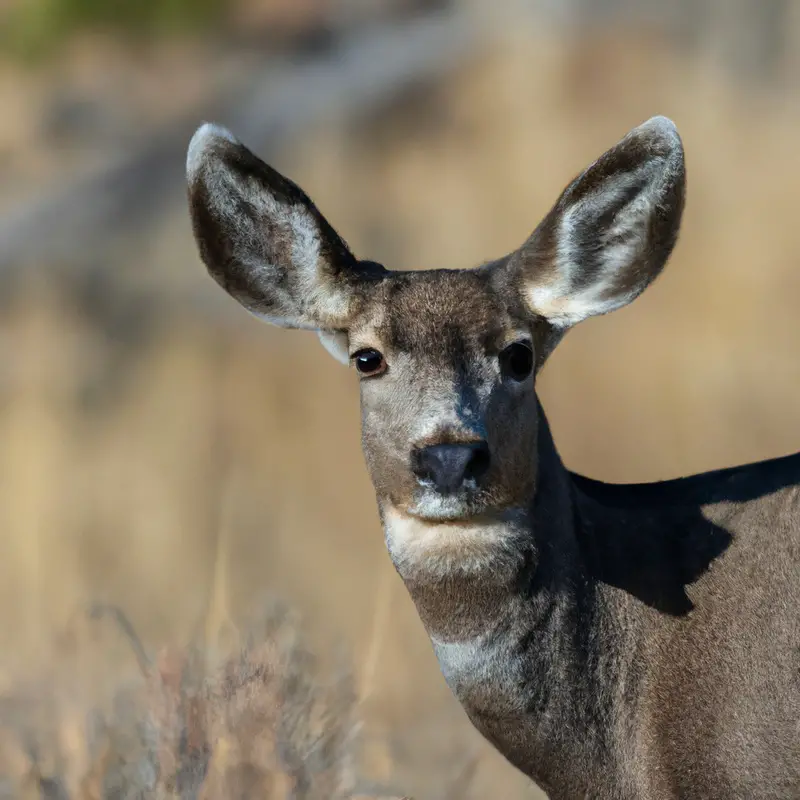
Techniques and Strategies for Hunting Mule Deer in California
Spot-and-Stalk Method for Mule Deer Hunting
The spot-and-stalk method is a popular technique for mule deer hunting in California.
Here’s how it works: first, you need to locate the deer by scanning the landscape using binoculars or a spotting scope.
Once you spot a deer, you carefully approach it, using any available cover to conceal your movements.
Keep in mind that mule deer have excellent eyesight, so be patient and move slowly.
When you’re within shooting range, take a steady aim and make your shot count.
This method requires skill and stealth, but it can be an effective way to hunt mule deer in open terrain.
Glassing Techniques for Locating Mule Deer
To effectively locate mule deer while glassing, start by finding a vantage point with a clear view of the area.
Use binoculars or a spotting scope to scan the landscape carefully, focusing on areas where deer are likely to be, such as open meadows or edges of thick cover.
Look for movement, flickering ears, or the flash of a white rump.
Be patient and take your time to thoroughly examine the terrain.
Adjust the zoom and focus of your optics to enhance your clarity and maximize your chances of spotting mule deer.
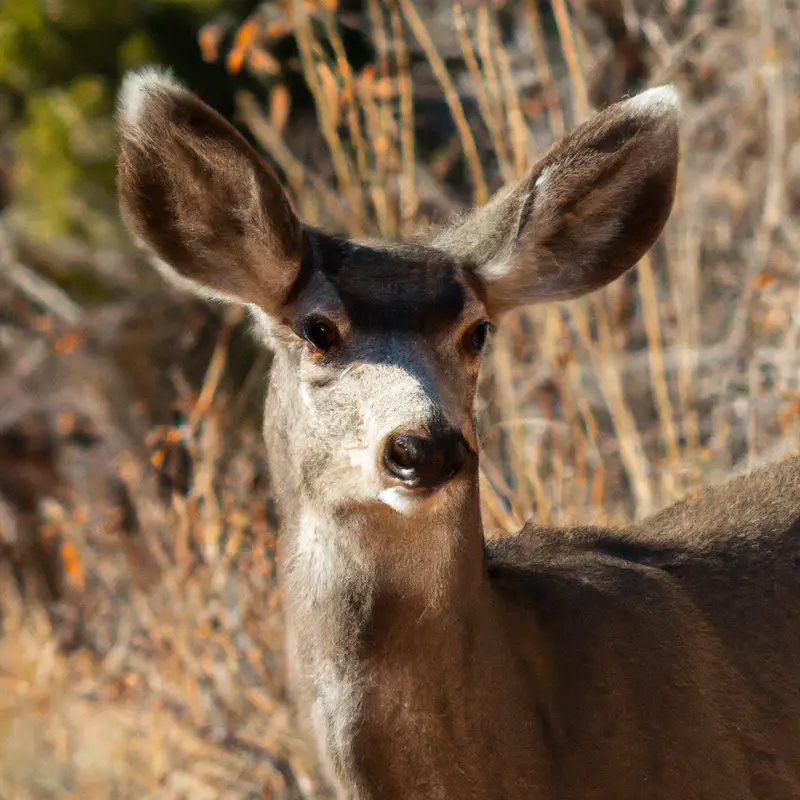
Calling Strategies for Mule Deer in California
Calling Strategies for Mule Deer in California When hunting for mule deer in California, calling can be an effective technique to attract them. Here are some calling strategies to consider:
- Mimic the sounds of a mule deer: Use a grunt call or rattle to imitate the vocalizations and antler clashes of mule deer. This can pique their curiosity and draw them closer.
- Timing is important: Mule deer are most responsive to calling during their breeding season, known as the rut. This typically occurs in the fall, so plan your hunting trips accordingly.
- Be patient and persistent: Calling can take time to work, so don’t give up too quickly. Stay in one area and continue calling at regular intervals to increase your chances of success.
- Use natural cover: Position yourself near natural features that can amplify your calls and make them sound more authentic, such as hillsides or valleys.
- Practice proper calling techniques: Learn to use your calls effectively by practicing beforehand. Study mule deer vocalizations and experiment with different tones and volumes to find what works best for you.
Remember, calling strategies may not always guarantee success, but they can definitely increase your chances of encountering and attracting mule deer in California. Happy hunting!
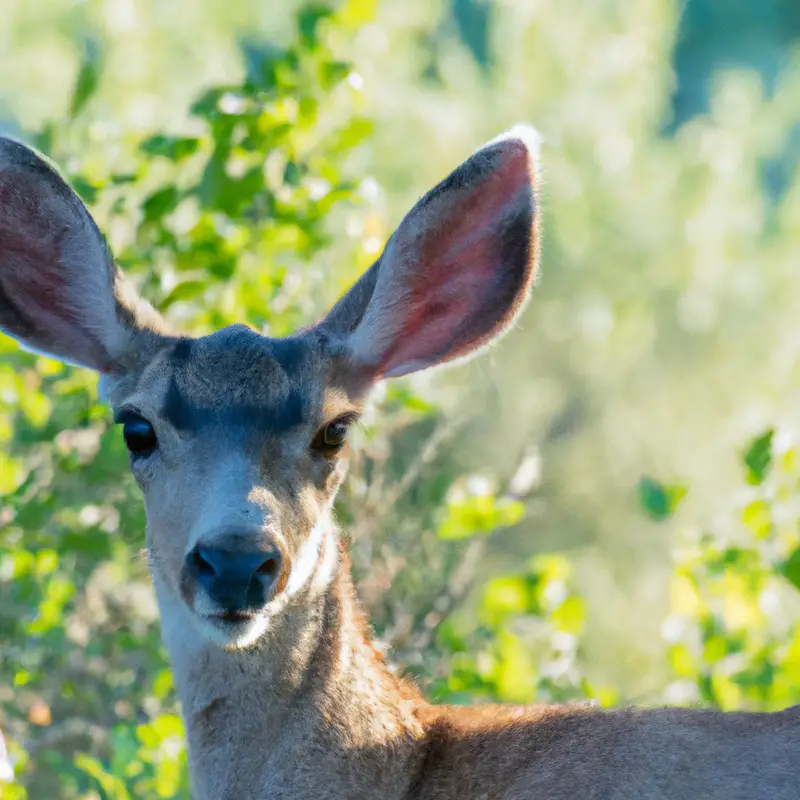
Tracking and Ambushing Mule Deer in California
When tracking and ambushing mule deer in California, it’s essential to understand their behavior and habitat. Look for signs such as tracks, droppings, and fresh rubs on trees.
Move quietly and try to blend in with your surroundings.
Find locations with good visibility and natural cover for ambushing. Use binoculars to scan the area and look for movement.
Patience is key – wait for the right moment to make your move.
Remember to always comply with hunting regulations and exercise safety when hunting.
Field Dressing and Processing Mule Deer in California
Field Dressing and Handling Mule Deer in the Field
Field dressing and handling mule deer in the field is an important skill for any hunter. After successfully harvesting a mule deer, it’s crucial to field dress it as soon as possible to preserve the meat.
Here are some key steps to follow:
- Locate a suitable spot: Find a clean, flat area away from dirt or dust to begin the process.
- Remove the entrails: Start by making an incision at the base of the deer’s belly and carefully remove the internal organs.
- Avoid puncturing organs: Take caution while field dressing not to puncture any organs, as it could contaminate the meat.
- Cool the carcass: To prevent spoilage, ensure the carcass is cooled rapidly by removing internal body heat with air circulation or ice packs.
- Protect the meat: Keep the deer’s carcass clean and free from dirt, debris, and bugs by covering it with a tarp or game bag.
Getting Your Mule Deer Tagged and Registered
Getting your mule deer tagged and registered is an important step in hunting. Once you have successfully harvested a mule deer, you need to make sure you tag it properly.
This usually involves attaching a tag with your personal information and the date and location of the harvest to the deer’s ear or antler.
Tagging helps with identification and ensures compliance with hunting regulations. After tagging, you must also register your harvested deer with the appropriate wildlife agency.
This helps gather valuable data for conservation efforts and population management.
Make sure to follow the specific guidelines and deadlines set by your state or regional wildlife agency for tagging and registering your mule deer.
Tips for Butchering and Processing Mule Deer Meat
When it comes to butchering and processing mule deer meat, there are a few tips that can help you have a successful and enjoyable experience.
Firstly, make sure you have all the necessary tools, such as a sharp knife, a bone saw, and a meat grinder.
Secondly, it’s important to properly clean and cool the meat as soon as possible after the kill.
Thirdly, take your time and be careful when removing the hide and separating the different cuts of meat.
Lastly, consider vacuum-sealing the meat for long-term storage.
These tips will help you make the most out of your mule deer meat and ensure its quality.
Frequently Asked Questions about Mule Deer Hunting in California
Can non-residents hunt mule deer in California?
Yes, non-residents can hunt mule deer in California.
However, they are required to obtain a non-resident hunting license, which allows them to participate in hunting activities within the state.
It’s important to note that there are specific regulations and guidelines for non-resident hunters, including tag requirements and hunting seasons.
It’s advisable to familiarize yourself with these regulations and plan your hunting trip accordingly.
Additionally, it’s always a good idea to consult with local authorities or experienced hunters for any additional information or tips.
Happy hunting!
What are the bag limits and hunting seasons for mule deer in California?
Bag limits and hunting seasons for mule deer in California vary depending on the hunting zone.
In general, the season runs from mid-July to mid-December, with archery and rifle seasons occurring at different times.
Bag limits differ based on the hunting zone, but most zones have a limit of one buck per season, and some zones may have additional restrictions on antler size or sex.
It’s important to consult the California Department of Fish and Wildlife for specific regulations and zone details before planning your hunt.
Can I use a rifle for mule deer hunting in California?
Yes, you can use a rifle for mule deer hunting in California.
Rifles are allowed for hunting mule deer in California, as long as you follow the state’s regulations and obtain the necessary hunting licenses and tags.
It’s important to check the specific hunting zones and seasons, as well as any additional restrictions or requirements that may be in place.
Additionally, make sure you have the appropriate caliber and ammunition for hunting mule deer.
Always prioritize safety and ethical hunting practices while enjoying your hunting experience.
Do I need a hunting license to hunt mule deer in California?
Yes, you need a hunting license to hunt mule deer in California. Hunting licenses are required for all hunters, regardless of the type of game you are pursuing.
In addition to a hunting license, you may also need to purchase tags or permits specifically for mule deer hunting, depending on the area and hunting season.
It’s important to check the specific regulations and requirements set by the California Department of Fish and Wildlife to ensure compliance before heading out on your hunt.
Final Verdict
Hunting mule deer in California offers a thrilling and rewarding experience for hunters of all levels.
By understanding the regulations and seasons, choosing the right hunting zone, and equipping yourself with the essential gear, you can increase your chances of a successful hunt.
Employing techniques such as the spot-and-stalk method, glassing, calling, and tracking can help you locate and harvest mule deer effectively.
When it comes to field dressing and processing, following proper handling procedures and butchering techniques ensures the quality of the meat.
Lastly, it’s crucial to stay informed about non-resident hunting opportunities, bag limits, weapon restrictions, and the necessity of a hunting license.
With thorough preparation and adherence to safety guidelines, you can embark on a memorable mule deer hunting adventure in California.
Happy hunting!
